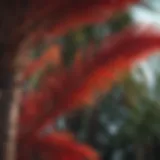Deciphering the Distinctions Between Bed Bugs and Similar Insects: A Comprehensive Guide
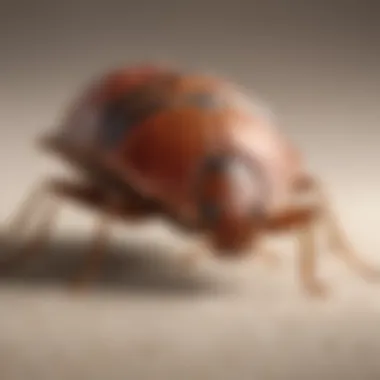

Animal Species Profile
Bed bugs are a type of insect that belongs to the Cimicidae family, known for their small size and reddish-brown coloration. These blood-sucking parasites are often mistaken for other bugs due to their similar appearance. Understanding the unique physical characteristics and behaviors of bed bugs is crucial in distinguishing them from their lookalikes.
- Introduction to the animal species
- Physical characteristics and appearance
- Natural habitat and distribution
- Behavior and social interactions
Bed bugs typically measure about 5-7 millimeters in length, with flat, oval-shaped bodies. They lack wings, have six legs, and are adept at hiding in cracks and crevices. Their natural habitat includes human dwellings, where they infest mattresses, furniture, and walls to feed on blood during the night. Bed bugs are nocturnal insects that avoid light and prefer to feed on their hosts while they are asleep. Their behavior encompasses a secretive nature, making them challenging to detect and eradicate.
Introduction
Importance of Identifying Bed Bugs Accurately
Health Risks Associated with Bed Bugs
When it comes to health risks associated with bed bugs, the primary concern lies in their ability to cause skin irritation and allergic reactions. The saliva of bed bugs can lead to itching, redness, and in severe cases, even infection. This information is vital for individuals as it highlights the importance of early detection and eradication of bed bugs to avoid health complications.
Prevention and Treatment Strategies
Effective prevention and treatment strategies against bed bugs play a crucial role in maintaining a healthy living environment. By understanding how to prevent bed bug infestations through cleanliness practices and adopting appropriate treatment methods, individuals can safeguard their homes against these parasites. This section provides insights into actionable steps that individuals can take to combat bed bugs effectively.
Overview of Bed Bugs
Physical Characteristics of Bed Bugs
The physical characteristics of bed bugs, including their flat reddish-brown bodies and oval shape, distinguish them from other insects. These features are essential in differentiating bed bugs from similar looking bugs, enabling individuals to correctly identify the presence of these pests in their surroundings.
Common Habitats
Bed bugs are known to inhabit various locations such as mattresses, furniture, and cracks in walls. Understanding their common habitats aids in targeted inspections and implementing measures to eliminate them from these areas, thus preventing infestations in residential spaces.
Feeding Behavior
Bed bugs feed on the blood of hosts during the night, primarily attracted by body heat and carbon dioxide. Their feeding behavior, characterized by their nocturnal activity and preference for human blood, sets them apart from other insects. Recognizing these behaviors is key to identifying and addressing bed bug infestations promptly.
Similar Looking Bugs
Exploring the topic of Similar Looking Bugs is crucial in this article as it provides a detailed understanding of bugs that share similarities with bed bugs. By focusing on Specific Elements the habits and identifying features of these bugs, readers can distinguish between them effectively. Understanding Similar Looking Bugs offers insights into key characteristics and behaviors that aid in bug identification.
Clothing Moths
Distinguishing Features
Delving into the Distinguishing Features of Clothing Moths sheds light on specific aspects that set them apart. The key characteristic of their physical appearance plays an essential role in differentiating them from other bugs. Their unique feature lies in the distinctive patterns on their wings, making them easily recognizable. In this article, the emphasis on these Distinguishing Features assists readers in accurate bug identification.
Habits
Exploring the Habits of Clothing Moths reveals insightful details about their behavior. Their key characteristic of targeting natural fibers in clothing and fabric showcases their preference for specific materials. This unique feature of Clothing Moths' habits highlights the need for proper storage techniques to prevent infestations effectively within households.
Carpet Beetles
Physical Appearance
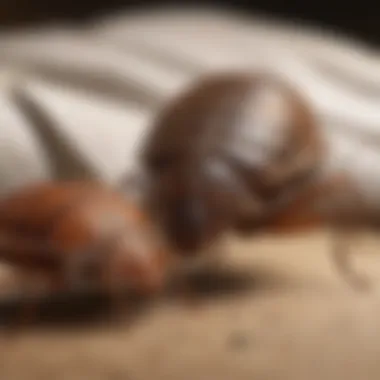

Discussions on the Physical Appearance of Carpet Beetles contribute significantly to bug identification processes. Understanding their key characteristic of varied colors and patterns on their backs aids in distinguishing them from other bugs. The unique feature of iridescence in certain species' wings presents advantages in recognizing Carpet Beetles accurately within living spaces.
Behavioral Patterns
Analyzing the Behavioral Patterns of Carpet Beetles offers valuable insights into their habits. Their key characteristic of feeding on natural fibers or organic matter showcases their preferences. This unique feature of Carpet Beetles' behavior highlights the importance of regular cleaning practices to prevent infestation and protect household items.
Bat Bugs
Habitat Preferences
Delving into the Habitat Preferences of Bat Bugs uncovers essential information about their living environments. Their key characteristic of residing primarily near bat roosts distinguishes them from other bugs. This unique feature of Bat Bugs' habitat preferences emphasizes the importance of thorough inspection in spaces frequented by bats to mitigate potential infestations.
Behavioral Variances
Exploring the Behavioral Variances of Bat Bugs reveals distinct behavior patterns compared to other bugs. Their key characteristic of occasional feeding on human hosts underscores their adaptive nature. This unique feature of Bat Bugs' behavioral variances underscores the need for proactive pest control measures to prevent potential contact with these bugs.
Swallow Bugs
Dietary Preferences
Understanding the Dietary Preferences of Swallow Bugs provides valuable insights into their feeding habits. Their key characteristic of feeding on the blood of birds distinguishes them from bugs targeting humans. This unique feature of Swallow Bugs' dietary preferences signifies the importance of differentiating between various bugs based on their preferred hosts for effective pest management.
Nesting Environments
Exploring the Nesting Environments of Swallow Bugs offers crucial information about their habitat preferences. Their key characteristic of nesting in close proximity to bird nests highlights their association with avian populations. This unique feature of Swallow Bugs' nesting environments underscores the significance of addressing bird infestations to prevent secondary bug infestations within human habitats.
Spider Beetles
Physical Traits
Delving into the Physical Traits of Spider Beetles provides valuable insights into their appearance and morphology. Their key characteristic of having an oval-shaped body with a light brown coloration aids in their distinction from other bug species. This unique feature of Spider Beetles' physical traits facilitates accurate bug identification within households.
Feeding Habits
Exploring the Feeding Habits of Spider Beetles sheds light on their dietary preferences. Their key characteristic of consuming a variety of organic materials, including cereals and dried fruits, showcases their adaptable feeding behavior. This unique feature of Spider Beetles' feeding habits underscores the importance of proper food storage practices to mitigate potential infestations and preserve foodstuffs.
Key Differences
Key Differences play a critical role in enhancing readers' understanding of the nuances between bed bugs and bugs that closely resemble them. By highlighting specific elements such as size, shape, coloration, and mating behavior, readers can grasp the intricacies of distinguishing between these pesky creatures effectively. Understanding these key differences is essential for accurate identification and implementation of targeted pest management strategies.
Distinctive Characteristics of Bed Bugs
Size and Shape
Exploring the size and shape of bed bugs is crucial in differentiating them from similar-looking bugs. Their minute size, ranging from 4 to 5 millimeters, coupled with an oval-shaped body, distinguishes them from other insects. This distinct characteristic facilitates easy identification during pest inspections, aiding in the prompt eradication of infestations.
Coloration
The reddish-brown coloration of bed bugs serves as a key distinguishing feature. This hue sets them apart from other pests and allows for swift recognition, enabling homeowners to take immediate action upon detecting their presence. Their distinct coloration aids in effective monitoring and control measures, contributing to efficient pest management.
Mating Behavior
Understanding the mating behavior of bed bugs sheds light on their reproductive cycle and population dynamics. Bed bugs exhibit traumatic insemination, where males pierce the females' abdomen during copulation. This distinctive behavior is vital in studying their breeding patterns and devising targeted control strategies to disrupt their reproductive cycle effectively.
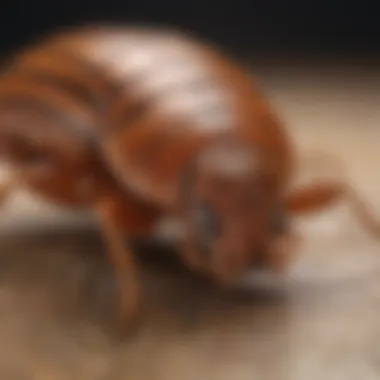

Behavioral Contrasts
Movement Patterns
Analyzing the movement patterns of bed bugs reveals their characteristic nocturnal behavior. These pests are adept at moving swiftly and stealthily, exploiting cracks and crevices in furniture and walls to navigate undetected. Recognizing their distinctive movement patterns aids in identifying potential hiding spots and implementing targeted treatments for infestations.
Feeding Preferences
Bed bugs display a distinct preference for human blood as their primary source of nutrition. Their unique feeding behavior, characterized by nocturnal feeding sessions lasting 3-10 minutes, sets them apart from other insects. Understanding their feeding preferences is crucial for devising effective control methods focused on eliminating food sources and disrupting their feeding habits.
Habitat Variances
Living Environments
Bed bugs thrive in human dwellings, particularly bedrooms, where they have easy access to their hosts for blood meals. Their preference for warm sheltered spaces, close to sleeping areas, influences their choice of living environments. Recognizing their affinity for residential spaces guides homeowners in conducting thorough inspections and applying targeted treatments to eradicate infestations.
Nesting Locations
Bed bugs tend to establish nests near their food source, often in mattresses, bed frames, and upholstered furniture. These secluded nesting locations provide the ideal breeding grounds for bed bugs, enabling them to reproduce and expand their colonies rapidly. Identifying common nesting sites is crucial for implementing strategic control measures and preventing widespread infestations.
Identification Methods
Identification methods play a crucial role in distinguishing between bed bugs and similar-looking bugs. They are essential for understanding the nuances in physical characteristics, habits, and behavior that differentiate these pests. By utilizing effective identification methods, individuals can accurately identify infestations and implement targeted control measures. In this article, the focus is on providing readers with comprehensive guidance on differentiating between bed bugs and their counterparts.
Visual Inspection
Examining Physical Features
When it comes to examining physical features, attention to detail is paramount. By scrutinizing the size, shape, and coloration of bugs, individuals can identify key distinguishing factors. This method aids in recognizing subtle differences that separate bed bugs from lookalikes. Examining physical features is a popular choice in pest identification due to its accuracy and reliability. However, it requires patience and a keen eye for detail. Despite its effectiveness, this method may have limitations in cases where bugs exhibit similar characteristics.
Spotting Signs of Infestation
Spotting signs of infestation involves detecting evidence of bug activity in living spaces. This includes identifying fecal stains, shed skins, and musty odors associated with bed bugs. By recognizing these indicators, individuals can confirm the presence of an infestation and take prompt action. This method is valuable for early detection and can prevent infestations from escalating. However, spotting signs of infestation may be challenging in hidden areas or light infestations.
Behavioral Analysis
Tracking Movements
Tracking bug movements provides insights into their behavior patterns and interactions. By observing how bugs navigate their environment, individuals can glean information on nesting locations and feeding preferences. This method is a valuable tool for understanding bug behavior and predicting their actions. However, tracking movements may require time and patience to observe bugs in various settings accurately. Despite its ability to provide valuable data, tracking movements may not always reveal comprehensive information on bug habits.
Observing Feeding Behavior
Observing bug feeding behavior offers direct insight into their nutritional needs and feeding cycles. By monitoring feeding habits, individuals can identify specific bugs based on their preferred hosts and feeding frequency. This method aids in understanding bug ecology and potential risks associated with infestations. However, observing feeding behavior may be challenging due to bugs' nocturnal habits or concealed feeding locations.
Professional Assistance
Consulting Pest Control Experts
Consulting pest control experts can offer specialized knowledge and skills in identifying and managing bug infestations. Pest control professionals can conduct thorough inspections, provide treatment recommendations, and implement control measures effectively. Their expertise enhances the accuracy of bug identification and ensures proper management strategies. However, consulting pest control experts may involve additional costs and reliance on external assistance.
Utilizing Detection Dogs
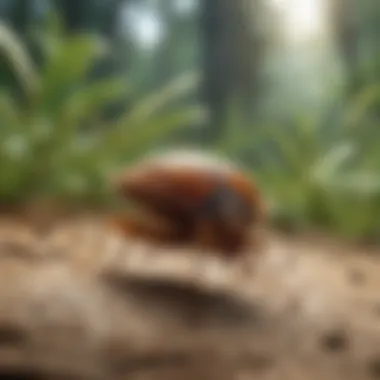

Utilizing detection dogs in bug identification showcases the benefits of canine olfactory capabilities in detecting hidden infestations. Dogs trained to detect bug scents can pinpoint infestation sites accurately and expedite the inspection process. This method is highly efficient in locating bugs in complex environments or large infested areas. However, utilizing detection dogs may require specific training and resources, making it a specialized but effective tool in bug detection.
Preventive Measures
Preventive measures play a crucial role in dealing with the menace of bed bugs and similar-looking bugs. In the context of this comprehensive article, preventive measures serve as the frontline defense against infestations, ensuring the safeguarding of living spaces. By implementing preventive measures diligently, individuals can mitigate the risk of encountering these unwanted pests and maintain a hygienic environment. Being proactive in preventing infestations not only protects physical well-being but also promotes mental comfort and peace of mind.
Maintaining Cleanliness
Regular Cleaning Practices
Delving into the realm of regular cleaning practices unveils a fundamental aspect of maintaining hygiene and warding off bugs effectively. The consistent removal of dust, debris, and clutter plays a pivotal role in eliminating conducive environments for bugs to thrive. The meticulous approach of regular cleaning practices not only enhances the visual appeal of living spaces but also disrupts potential hiding spots for bed bugs and similar pests. The systematic nature of regular cleaning promotes a healthier lifestyle, contributing significantly to the overall well-being of residents.
Decluttering Living Spaces
Within the realm of preventive measures, decluttering living spaces emerges as a crucial strategy in bug prevention. Decluttering encompasses the removal of unnecessary items, reducing hiding spots for bugs and facilitating easier detection of infestations. The streamlined and organized living areas resulting from decluttering not only deter bugs but also enhance the aesthetic appeal of homes. By decluttering living spaces, individuals create environments that are less hospitable to bugs, thereby lowering the risk of infestations and promoting a sense of order and tranquility.
Securing Living Areas
Sealing Cracks and Crevices
Addressing the issue of sealing cracks and crevices underscores the significance of fortifying entry points for bugs. Sealing off potential entryways acts as a barrier against intruding pests, limiting their access to indoor spaces. The meticulous act of sealing cracks and crevices prevents bugs from infiltrating homes, reducing the likelihood of infestations significantly. This proactive approach not only enhances structural integrity but also minimizes vulnerabilities that bugs could exploit, safeguarding living areas effectively.
Installing Protective Covers
Incorporating protective covers into bug prevention strategies reinforces the defense mechanisms against infestations. Protective covers act as physical barriers, shielding mattresses, pillows, and furniture from bug infestations. By installing protective covers, individuals create barriers that deter bugs from establishing habitats within bedding and upholstered furniture. This preventive measure not only prolongs the lifespan of furniture but also ensures a hygienic sleeping and living environment, offering peace of mind and comfort.
Educational Resources
Raising Awareness
Raising awareness emerges as a pivotal aspect of bug prevention, highlighting the importance of knowledge dissemination in combating infestations. By raising awareness about bug identification, habits, and prevention strategies, individuals empower themselves and others to detect and address bug issues effectively. The strategic dissemination of information fosters a community-driven approach to bug prevention, creating a network of vigilant individuals committed to maintaining bug-free environments. Raising awareness not only educates but also mobilizes communities towards proactive bug management.
Providing Information to the Community
Providing information to the community amplifies the impact of bug prevention efforts, reaching a wider audience and fostering collective action. By sharing information about bug prevention measures, identification techniques, and treatment options, communities equip themselves with the knowledge necessary to tackle bug-related challenges. The collaborative exchange of information cultivates a culture of shared responsibility, where community members actively engage in bug prevention activities. Providing information to the community initiates a ripple effect of awareness and action, solidifying the collective resolve to combat bugs effectively.
Conclusion
In analyzing the dynamics between bed bugs and similar-looking bugs, the importance of drawing definitive conclusions cannot be overstated. By summarizing the delineating aspects discussed throughout the article, a clearer picture emerges. Readers are equipped with the knowledge to discern between these nuisance creatures effectively. Understanding the nuanced dissimilarities is imperative for effective pest management and ensuring a healthy living environment free from infestations.
Summarizing Differentiating Factors
Clear Identification Guidelines
Clear identification guidelines serve as the cornerstone of distinguishing between bed bugs and their doppelgangers. Their significance lies in providing precise criteria for accurate identification, aiding individuals in promptly addressing potential infestations. The key characteristic of clear identification guidelines is their emphasis on specific physical attributes and behaviors unique to bed bugs, enabling laypersons to differentiate them from visually similar insects. One notable advantage of clear identification guidelines is their accessibility and simplicity, making them a popular choice for educational purposes within this article. By outlining clear parameters for recognition, these guidelines streamline the identification process and enhance awareness of subtle differences.
Effective Pest Management Strategies
Effective pest management strategies constitute the practical application of knowledge acquired through clear identification guidelines. They play a pivotal role in eradicating bed bug infestations and preventing their reoccurrence. A fundamental aspect of these strategies is their proactive approach towards addressing pest problems holistically, encompassing identification, treatment, and prevention measures. The key characteristic of effective pest management strategies is their tailored approach, considering factors like infestation severity, location, and potential risks to inhabitants. This personalized methodology ensures successful pest control outcomes, making it a beneficial choice for implementing comprehensive solutions within this article. Despite their effectiveness, these strategies may pose challenges related to cost and time investment; however, their proven track record justifies their utilization in maintaining pest-free environments.
Promoting Vigilance
Encouraging Timely Action
Encouraging timely action emerges as a critical aspect of promoting vigilance against bed bug infestations. Timeliness is of the essence when dealing with these pests, as unchecked infestations can escalate rapidly, leading to widespread issues. The key characteristic of encouraging timely action is the sense of urgency instilled in individuals to address potential signs of infestation promptly. This proactive stance proves beneficial by curbing the spread of bed bugs and minimizing the impact on living spaces. An advantage of this approach is its preventative nature, averting more significant infestation problems down the line. Despite its benefits, timely action may require quick decision-making and resource allocation, presenting challenges in certain situations. Nonetheless, the assurance of early detection and mitigation outweighs these considerations, making it a prudent choice in safeguarding against bed bug invasions.
Emphasizing Awareness
Emphasizing awareness plays a pivotal role in fostering a culture of vigilance and preparedness among individuals. By educating communities and individuals about the risks associated with bed bugs and the importance of proactive measures, awareness campaigns serve as a valuable tool in preventing infestations. The key characteristic of emphasizing awareness is its emphasis on knowledge dissemination and behavioral change, encouraging individuals to adopt habits that deter bed bug infestations. This strategy is popular for its holistic approach, addressing not only immediate infestation concerns but also long-term prevention measures. An advantage of emphasizing awareness is its ability to instigate community action and responsibility, creating a collective effort in combating pest threats. However, maintaining awareness levels and sustaining engagement over time may present challenges, requiring ongoing efforts and resources. Nevertheless, the long-term benefits of a well-informed and alert community outweigh these challenges, making awareness a fundamental component of pest management initiatives.
